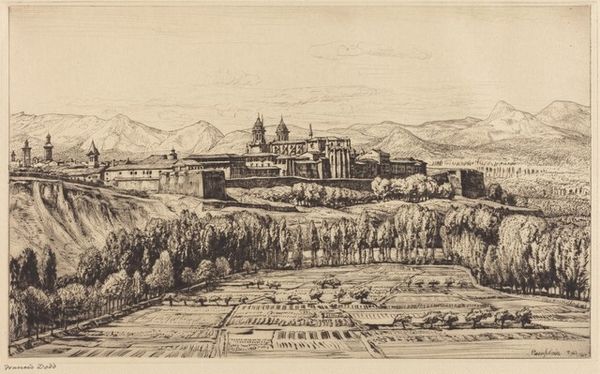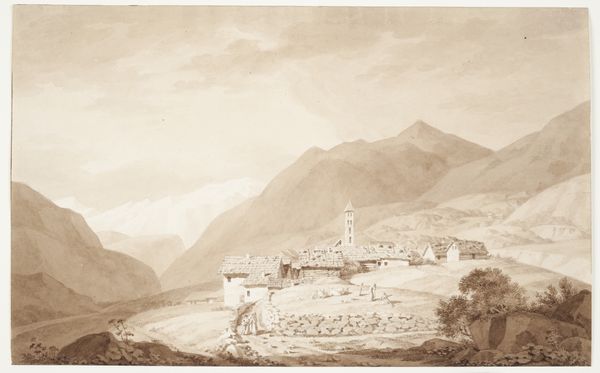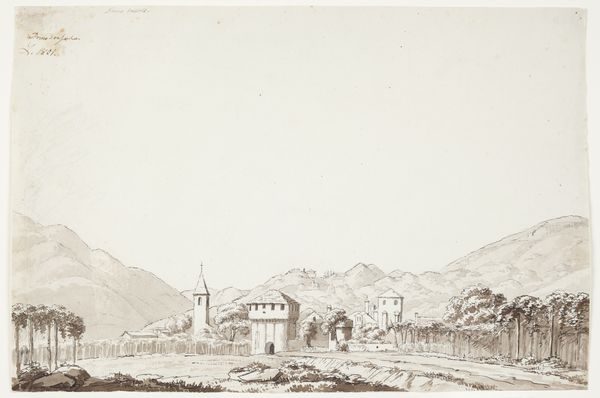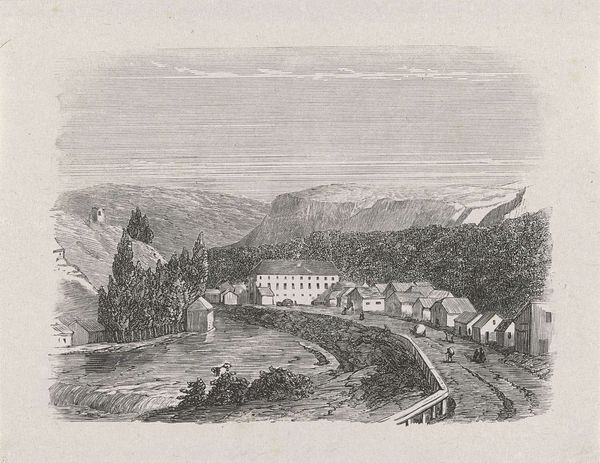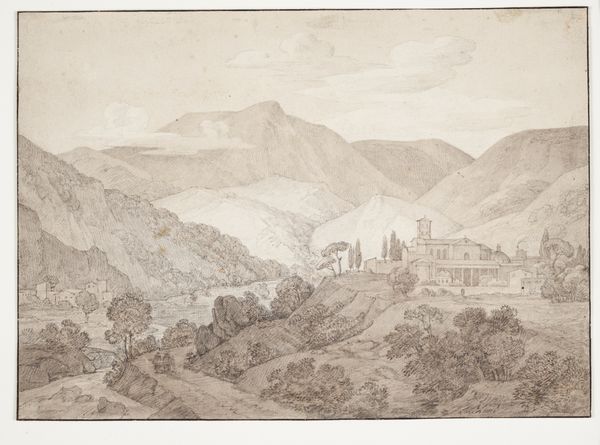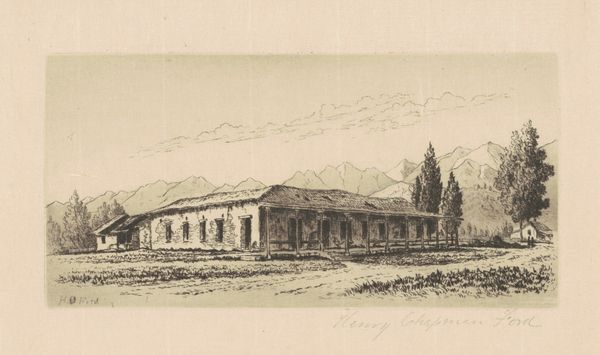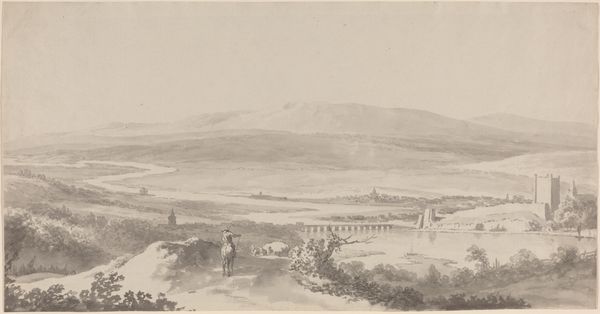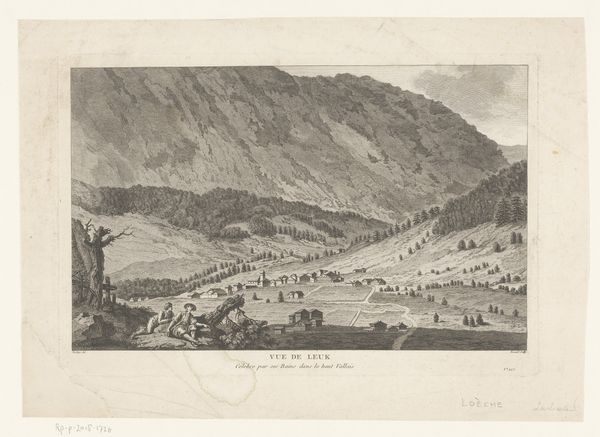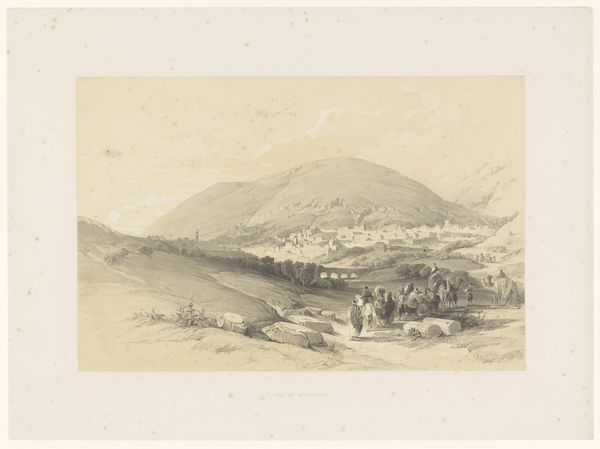
print, etching
# print
#
etching
#
landscape
#
watercolor
#
realism
Dimensions: plate: 20.16 × 30.32 cm (7 15/16 × 11 15/16 in.) sheet: 32.07 × 44.13 cm (12 5/8 × 17 3/8 in.)
Copyright: National Gallery of Art: CC0 1.0
Curator: We're looking at Henry Chapman Ford's 1883 etching, "Mission Santa Barbara". Editor: My first thought is about the quiet dignity conveyed by the muted tones, almost like a faded memory. The lines are very precise, giving the landscape an aura of stately realism. Curator: Absolutely. The work is rendered in exquisite detail for its size; note the precise rendering of architectural features, which adhere to principles of spatial organization and symmetry. The building's geometric form contrasts against the softer, more diffuse shapes of the natural world that surrounds it. The visual rhythm, articulated through a strategic distribution of tonal values, moves the eye methodically from the foreground toward the background. Editor: The image of the mission, firmly set against the backdrop of the mountains, evokes the enduring presence of faith and its imposition on the land. Notice how the towers—symbols of reaching towards heaven—mirror the peaks, suggesting an almost symbiotic relationship between the spiritual and the natural worlds. The figures walking along the dirt paths seem to underscore the everyday rituals carried out in the shadow of this religious icon. Curator: Interesting, and perhaps these symbolic readings come about precisely because of the technical mastery on display. For example, consider the way the light diffuses across the etched surface, giving the whole composition a unifying visual texture. Note how Ford carefully controls the transitions between dark and light, allowing for a gradual build-up of form. This compositional unity provides clarity of vision and contributes to an impression of permanence. Editor: Well said. And if one is familiar with the history of missions like Santa Barbara, that impression may conflict with the historic subjugation involved with its presence. Curator: True. In conclusion, it’s that contrast between geometric form and nature combined with precision and diffusion of light that results in visual harmony and ultimately produces that sense of quietness you initially perceived. Editor: I concur, and ultimately, in its time, the piece allowed people to contemplate the lasting and conflicted legacy that lingers even today in the California landscape.
Comments
No comments
Be the first to comment and join the conversation on the ultimate creative platform.

